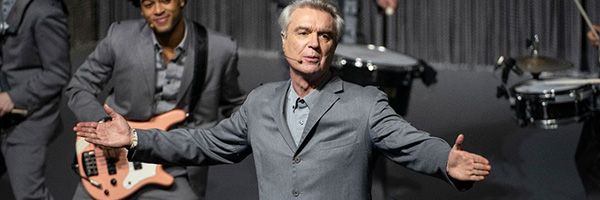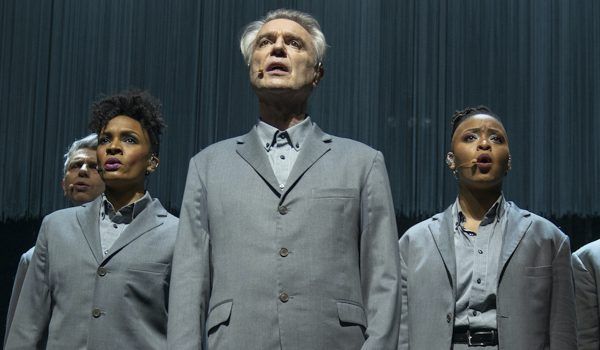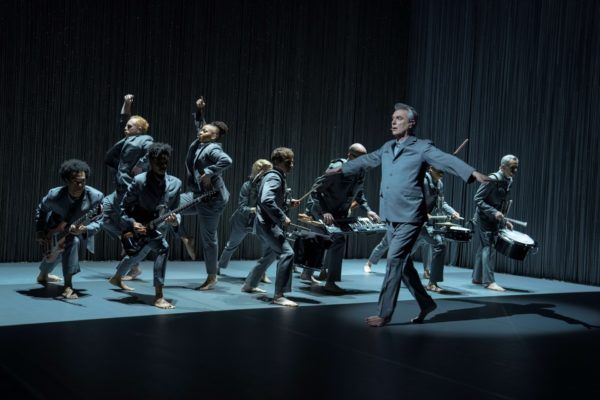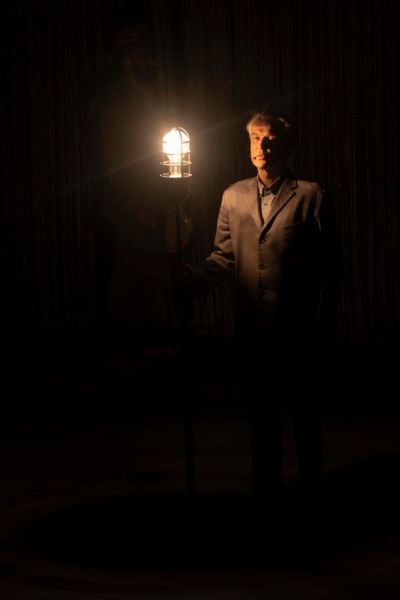Stop Making Sense is one of my all-time favorite films, let alone all-time favorite concert films. How on earth could David Byrne strike this level of gold again? By shifting his intentions rapidly, dramatically, constructively. Yes, he still has a phenomenal band entering one by one playing phenomenal music, some tunes of which are literally the same as in Stop Making Sense. Yes, he's teamed up with another genre-hopping auteur, Spike Lee. And yes, he's wearing a strangely-fitting gray suit again. But David Byrne's American Utopia is resolutely its own statement. Instead of giving into despair and the loose absurdities of the world, Byrne suggests it's time to examine why these absurdities exist, reframe them as joys, and most radically, suggest that our lives, our futures are worth living. American Utopia suggests it's time to start making sense, and we are all the better for it.
Byrne, best known as the frontman of influential post-punk-funk band Talking Heads, began the life of American Utopia as a solo record with regular collaborator Brian Eno. He then took an absolutely phenomenal band on the road to perform a theatrical version of American Utopia, incorporating several of his Talking Heads cuts as well. Then, that show became a legit Broadway show, featuring impeccably minimalist production design, a satisfyingly mobile way to play instruments while marching around, some of the strangest and most endearing choreography you'll ever see, one-man-show-esque asides and explanations to the audience by Byrne, and absolutely zero shoes. This Broadway show became a massive hit, and is now a Lee-directed concert film for you to stream from the comfort of your own home.
Lee, alongside DP Ellen Kuras and editor Adam Gough, translate the live pleasures of a professional Broadway production impeccably. Despite Byrne's music being rife with syncopation, raucous energy, and jaggedly stark (and sometimes literally nonsensical) lyrics, the visual team avoids a quick-paced rhythm. Instead, we take in Byrne and his troubadours in patient, splendid long takes, allowing us the pleasures of watching incredible artists find their way into the pocket and staying there. Close-ups and mediums make the work feel more cinematic, and frankly, more legible than, say, seeing the show from the nosebleed cheap seats at the Hudson Theatre, but because we stay on these individual shots longer than expected, we get the theatrical thrill of "deciding to notice an individual performer's rhythms for awhile before moving on to the next one." I'm the most impressed by Lee's predilection for wide shots in this piece, giving the performers a sense of existing as a unit, filling up the purposefully sparse stage, and allowing his audience to take in their pieces of marching band-esque choreography with glee (every time we cut to a bird's eye view of the stage, I audibly gasped). Lee's work is smooth, subtle, and generally unobtrusive, with a few notable exceptions that stick to your bones — a jump cut into "Blind" shocks the system after such traditional editing choices, and the sudden usage of real people and pictures to visually illustrate "Hell You Talmbout" is so potent as to provoke tears.
"Hell You Talmbout" is a protest song originally performed by Janelle Monáe, a minor key vocals-and-percussion foot-stomper that name-checks so many Black people needlessly murdered by the police in America, shaking its listener out of complacency. It represents a very explicit point of American Utopia: Make change, now. At certain points in the film, Byrne shakes out of his "so cryptically literal it becomes a metaphor" approach of lyrical communication to straight up share voting statistics with the audience, telling them they can register to vote right there at the performance. He even tells the "kids" in the crowd that unless things change, when it comes to climate change, "you're fucked." It's beyond startling to see a figure I've long viewed as being somewhat removed from our human world engage with humanity so bluntly; in these moments, you see Byrne's intentions line up with Lee's intentions perfectly, gaining some of that "technically sloppy but emotionally vital" energy contemporary Lee works are so good at.
And yet, the intentions of American Utopia are not to foster or stoke feelings of despair or hopeless inaction. Even before performing "Hell You Talmbout," Byrne tells the audience that "it’s a requiem for lives that have been senselessly taken. But it’s also about possibility. The possibility of change. But it’s not just about change in the imperfect world out there. It’s about myself. I also need to change." The framing device of the entire performance involves the idea of the possibility of the human brain, to the point where Byrne holds a fake brain in the first song. Our brains have their most neural connections and pathways as babies, with many of them shedding as we grow older. Byrne is determined, throughout the show, to figure out and understand where these connections and pathways go, especially within the context of fitting in within our modern world. Byrne, in other words, needs this all to make sense.
But his journey of discovery isn't marked by derision, venom, or satirical grumpiness — even if the original intention of some of his pieces may have been in that mode, as he self-effacingly explains before standout cut "Everybody's Coming to My House". Byrne's eyes, heart, and brain are wide open, eager to take in every facet of the human condition. "I’m pointing and describing, and I can be your guide," sings Byrne in this tune, shedding light and context onto his lyrics that tend to, well, point out and describe things in life with a childlike sense of unadorned wonder. American Utopia collects every piece of stimulus in American life, as innocuous as "living in a shotgun shack" and as existential as wondering "how did I get here?", and presents them as portals into each other's homes, eyes, lives, brains. Getting shocked out of complacency isn't just an effective tool for anger; it's used brilliantly for activistic joy here, too. Through these simple renderings of simple life components — and, if I haven't stressed it enough, absolute bangers of high-energy funk tunes — Byrne and his team find an answer to his neural pathway quandary. The answer will grow your heart, water your eyes, and make you act.
David Byrne's American Utopia, despite its intentional construction, rigorously staged formalism, and simple thematic thrusts, misses its natural ending point a couple times in a row. Its predilection for direct address sometimes results in awkwardness, in points and messages that don't coalesce with the preceding and following points and messages. And on occasion Lee's filmmaking hiccups with unintentional lapses in continuity, in immersion. Would I have preferred a version of this film with these elements tightened up? Perhaps. But perhaps these rough-around-the-edges moments help illustrate Byrne's journey, joy, optimism, connectivity, and humanity. Perhaps this is, to borrow a phrase from a Byrne track that didn't make the film, his ultimate statement on how to behave like humans do.
Grade: B+
David Byrne's American Utopia comes to HBO and HBO Max on October 17. For more on my musical musings, here's a take on the music from Eurovision.




